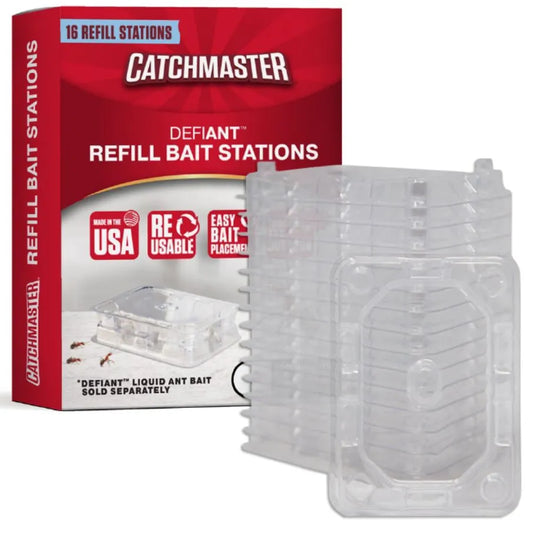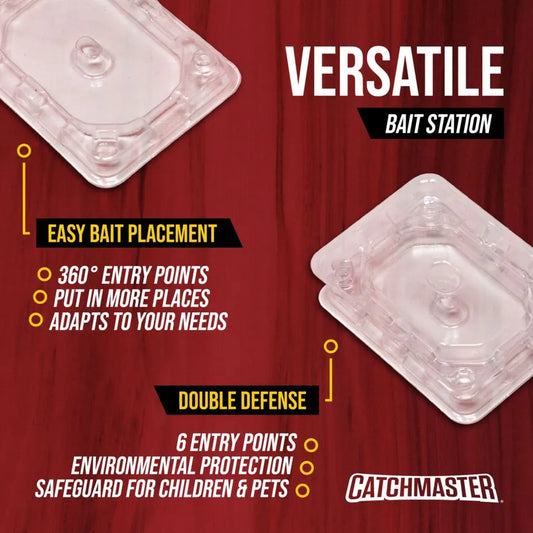DEFIANT™ Ant Traps: Precision Formulated for Maximum Effectiveness
Innovative Design for Optimal Results
DEFIANT™, a Comprehensive Ant Management System
Safe and Eco-Friendly Solutions
Our Quality Assurance Promise
Choose Catchmaster for Ant Trapping Expertise
FAQs
At Catchmaster, we offer a comprehensive range of ant control solutions designed to tackle various ant infestations effectively. Our products include bait stations, liquid ant killers, and perimeter treatments, each crafted to ensure both immediate and long-term relief from ant problems.
The key to choosing the right ant solution lies in identifying the ant species and understanding the scope of the infestation. For localized problems, bait stations or liquid ant killers might be sufficient. For larger, more pervasive infestations, a combination of products, including perimeter treatments, may be necessary.
Our ant control products are designed with the safety of your family and pets in mind, employing non-toxic and eco-friendly ingredients whenever possible. However, we always recommend following the product instructions carefully and keeping treatments out of reach of children and pets.
The time frame for seeing results can vary depending on the product used and the extent of the infestation. It's typical to see ant activity increase before it decreases because ants share the location of food with other ants in the colony. This is a good thing because it increases the pace that the any poison reaches the queen and kills the colony for good. Some ant control products say two weeks to eradicate, but for the best outcomes, it's crucial to follow the application instructions and maintain a consistent treatment plan as all are different.
Yes, prevention is a critical component of effective ant control. Along with using Catchmaster ant solutions, we recommend sealing entry points, keeping areas clean of food debris, and reducing moisture sources around your property. Our products also include options for creating a protective barrier around your home to deter new ant colonies from forming.





